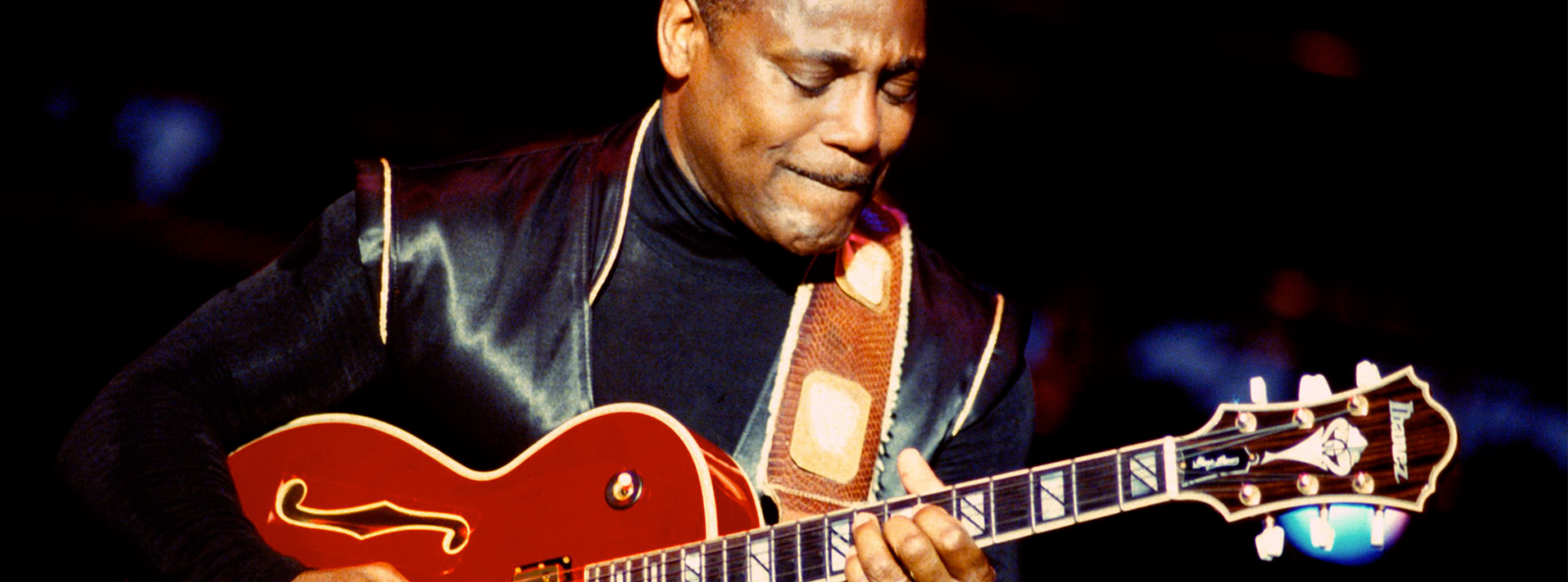Van Halen I - A guitarist's perspective
Guitar lessons by Jamie Humphries
"Van Halen I," the debut album by the legendary rock band Van Halen, released in 1978, forever changed the landscape of rock guitar. Selling more than ten million copies worldwide, Van Halen contains many of the bands signature tracks, including “Runnin’ with the Devil”, “Ain’t Talkin’ ‘Bout Love” and Eddie Van Halen’s solo guitar masterpiece, “Eruption.”
In this course, LickLibrary veteran, Jamie Humphries walks you through the many highlights of each song from the heavy metal icons one phrase at a time, including all of Eddie Van Halen’s legendary guitar parts from the tracks; “Runnin’ With the Devil,” “Atomic Punk and the iconic solo for, “Eruption.” A must-have for all Van Halen fans, get your tapping finger ready for this incredible guitar lesson course!
In this article, we'll analyze each song on the album from a guitarist's point of view, focusing on guitar scales, solos, and techniques employed by the band's iconic lead guitarist, Eddie Van Halen.
Runnin' with the Devil
Opening the album, "Runnin' with the Devil" showcases Eddie's use of power chords and palm-muted syncopated rhythms. The main riff is played in the E mixolydian mode, and the solo features Eddie's signature tapped harmonics and string bending techniques. Eddie employs the E minor pentatonic scale during the solo, adding chromatic passing tones for extra flavor.
Eruption
"Eruption" is a revolutionary instrumental guitar piece that features Eddie's virtuosic playing. The track starts with an ascending tapping sequence in the E minor pentatonic scale, followed by a dive bomb using the whammy bar. The piece transitions into a series of legato runs and harmonics before a final descending tapping sequence, also based on the E minor pentatonic scale.
You Really Got Me
This cover of The Kinks' "You Really Got Me" features a powerful, driving rhythm guitar part played with power chords and syncopated rhythms. The solo incorporates unison bends, double stops, and chromaticism, creating a bluesy feel. The solo is primarily based on the G minor pentatonic scale, with occasional use of the G blues scale.
Ain't Talkin' 'Bout Love
"Ain't Talkin' 'Bout Love" is an excellent example of Eddie's use of arpeggiated chord progressions and open string riffs. The main riff is played using the E minor scale, and the solo showcases his signature tapped harmonics, string bending, and alternate picking techniques. The solo is based on the E minor pentatonic scale, and Eddie employs the E Dorian mode to add a sense of tension and release.
I'm the One
"I'm the One" is an uptempo rockabilly-influenced track, featuring galloping rhythms, Travis picking, and a fast-paced boogie-woogie chord progression. The solo section includes bluesy bends, rapid alternate picking, and Eddie's trademark tapping technique. The solo is predominantly based on the A minor pentatonic and A blues scales, with some chromatic passing tones incorporated throughout.
Jamie's Cryin'
"Jamie's Cryin'" displays Eddie's prowess in writing catchy riffs and chord progressions. The song is based on the E mixolydian mode, and the solo section consists of octaves, double stops, and a series of chromatic runs. The solo is primarily based on the E minor pentatonic scale, with occasional use of the E major scale for melodic contrast.
Atomic Punk
"Atomic Punk" features a heavy, palm-muted riff in the A Phrygian mode. The solo employs a variety of techniques, including tremolo picking, tapped harmonics, and whammy bar tricks. The solo primarily uses the A minor pentatonic scale, with the A Phrygian mode adding an exotic, dark quality to the composition.
Feel Your Love Tonight
"Feel Your Love Tonight" is a high-energy rock tune, featuring a driving chord progression and a catchy chorus. The solo showcases Eddie's extensive use of hammer-ons and pull-offs, as well as his signature tapping and string bending techniques. The solo is based on the A major pentatonic scale, with some additional chromatic passing tones for added interest.
Little Dreamer
"Little Dreamer" is a mid-tempo track that highlights Eddie's ability to create atmospheric riffs and chord progressions. The song is based on the E Dorian mode, and the solo section features a mix of double stops, string bends, and legato phrasing. The solo is primarily based on the E minor pentatonic scale, with some use of the E Dorian mode for added color and tension.
Ice Cream Man
"Ice Cream Man" starts as a bluesy, finger-picked acoustic track before transitioning into a hard rock anthem. The main riff is played using the A blues scale, and the solo incorporates a mix of bluesy bends, double stops, and rapid-fire alternate picking. The solo is predominantly based on the A blues scale, with some chromaticism and use of the A major pentatonic scale for contrast.
On Fire
The final track, "On Fire," is a high-energy rocker featuring fast-paced power chords and syncopated rhythms. The solo showcases Eddie's mastery of two-handed tapping, string bending, and rapid alternate picking. The solo is primarily based on the F# minor pentatonic scale, with occasional use of the F# Dorian mode for added tension and release.
Eddie Van Halen's Contribution
Eddie Van Halen's contributions to "Van Halen I" cannot be overstated. His innovative and groundbreaking techniques redefined the way rock guitar was played and opened the door for countless guitarists who would follow in his footsteps. Eddie's style incorporated a unique blend of speed, precision, and melody, making him one of the most influential guitarists in history.
Eddie's use of two-handed tapping, in particular, set him apart from his contemporaries. This technique allowed him to play rapid-fire sequences and intricate harmonies that were previously unattainable on the guitar. His creative use of the whammy bar, harmonics, and alternate picking further expanded the instrument's sonic possibilities, inspiring countless musicians to push the boundaries of their playing.
In addition to his virtuosic playing, Eddie's skill as a songwriter shines through on "Van Halen I." The album's memorable riffs, catchy melodies, and innovative chord progressions showcased his ability to craft songs that resonated with audiences and stood the test of time.
In conclusion, "Van Halen I" is a seminal album in the history of rock guitar. It showcases Eddie Van Halen's revolutionary playing techniques, his prowess as a songwriter, and the band's ability to create memorable and timeless songs. As a guitarist, diving into this album's wealth of techniques, riffs, and solos can be a rewarding and inspiring journey, offering endless opportunities to learn and grow as a musician.
Guitar Techniques Used in "Van Halen I"
- Vibrato
- Alternate Picking
- Legato
- Tapped Harmonics
- Double-Stop Bends
- Unison Bends
- Pinched Harmonics
- Trills
- Tremolo Picking
- Chord Progressions
- Arpeggios
- Dive Bombs
- Harmonics
- Pull-Offs
- Power Chords
- Palm Muting
- Barre Chords
- Two-Handed Tapping
- Sweep Picking
- Rakes
- Finger-Picking
- Hybrid Picking
- Pre-Bends
- Hammer-Ons
- Double Stops
- Slides
- Travis Picking
- Sustain
- Pick Slides
- String Bending
- Syncopated Rhythms
- Open String Riffs
- Whammy Bar Tricks
- Bluesy Bends
- Octave Melodies
- Galloping Rhythms
- Dual Guitar Harmonies
- Arpeggiated Chord Progressions
- Chromaticism
- Altered Tunings
About The Tutor
Tutor Profile
Jamie Humphries
Jamie is one of the mainstays of LickLibrary, having a stream of hugely successful best selling DVDs, Jamie is best known as Brian May's sideman who he's played shows with all over the world. Aside from this Jamie is a hugely popular clinician working all over the world with Ernie...



